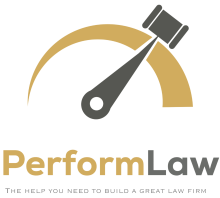When transitioning from a founder-owned law firm, it’s essential to establish a clear plan to ensure the firm’s continued growth and stability. A successful transition depends on strategic priorities that enhance operational efficiency, improve client satisfaction, and secure long-term success.
Below, we outline the key areas to analyze and implement for a seamless shift in leadership and operations.
-
Work-Life Timelines
Work-life timelines act as a roadmap for planning the future of the firm. They provide a structured planning horizon that helps leadership forecast and prepare for critical milestones, such as retirements or leadership transitions. For instance, mapping out partner retirement dates allows the firm to identify when leadership gaps may occur and develop succession plans proactively.
-
Marketing Effectiveness
Effective marketing strategies are the backbone of a firm’s revenue growth. Assessing your marketing effectiveness involves analyzing the ability to meet revenue goals while considering the business risks associated with exiting partners. For example, if a founder has historically been a key rainmaker, your marketing plan must address how to replace their client development efforts with targeted campaigns and new initiatives, such as digital outreach or niche practice area marketing.
-
Attorney Development
Attorney development ensures that the firm maintains a continuous and adaptable skill set. As founders exit, having a pipeline of well-trained attorneys is critical to sustaining client relationships and maintaining institutional knowledge. Regular mentorship programs, skill-building workshops, and tailored career growth plans help prepare attorneys to take on leadership roles in the future.
-
Recruiting Effectiveness
Strong recruiting processes are essential for addressing capability and capacity gaps created by departing founders. Recruiting effectiveness goes beyond hiring; it involves attracting and retaining top legal talent who align with the firm’s culture and goals. Offering competitive benefits, a clear career trajectory, and a supportive environment can position the firm as a destination for top-tier candidates.
-
Compensation and Incentives
A well-designed compensation and incentive structure is vital to the firm’s profitability and transition success. Attracting high-profit lateral hires, ensuring partners are practicing profitably, and facilitating smooth transitions for senior partners require thoughtful compensation planning. For example, implementing performance-based bonuses tied to billable hours or collections can motivate both current attorneys and incoming talent.
-
Policy Development
Clear and consistent policies build trust and promote a culture of fairness among partners, associates, and staff. Whether it’s defining work-from-home expectations or delineating the decision-making process, policy development ensures that the firm operates smoothly during and after the leadership transition.
-
Partnership or Operating Agreements
A robust partnership or operating agreement ensures that decision-making processes are clear and actions carry appropriate weight. These agreements provide a framework for resolving disputes, allocating equity, and governing major decisions—such as onboarding new partners or adjusting compensation structures. This clarity helps reduce friction during transitional periods.
-
Equity Transfer Processes
Equity transfer is one of the most sensitive aspects of transitioning a founder-owned firm. Establishing clear processes for equity transfer ensures that the firm can perpetuate itself without unnecessary controversy. By structuring buyouts or equity redistribution in advance, the firm avoids disruptions that could harm operations or morale.
-
Technology
Investing in technology is critical for maintaining efficiency and gaining a competitive edge. Technology tools, such as practice management systems, client portals, and AI-driven analytics, streamline operations and strengthen client relationships. For instance, adopting cloud-based platforms allows for seamless collaboration among team members and improves data security during the transition.
-
Supportive Platforms
Creating a supportive platform that elevates the success of lawyers and staff is key to a smooth transition. This might include mentorship programs, robust professional development opportunities, and fostering a collaborative work culture. A supportive platform not only helps retain existing talent but also enhances the firm’s reputation as a desirable place to work.
-
Trained and Motivated Staff
A well-trained and motivated staff is essential for maintaining operational continuity during a leadership transition. Cross-training employees on various roles and responsibilities ensure that knowledge is retained and transferred effectively. For example, ensuring paralegals are familiar with new practice management systems or administrative protocols reduces the risk of disruption.
-
Implementation
Strategic planning is only as good as its implementation. Moving from the planning phase to actionable steps is vital for securing the firm’s long-term interests. By setting clear timelines, assigning responsibilities, and tracking progress, the firm can ensure that the transition plans lead to tangible outcomes.
Conclusion
By focusing on these critical areas, your firm can develop a comprehensive, thoroughly analyzed, and ready-to-implement set of priorities. These steps will help your firm thrive in the post-founder era while ensuring smooth transitions, client retention, and operational excellence. Transitioning a founder-owned law firm may seem daunting, but with careful planning and execution, your firm can secure a prosperous future.




 />i
/>i

